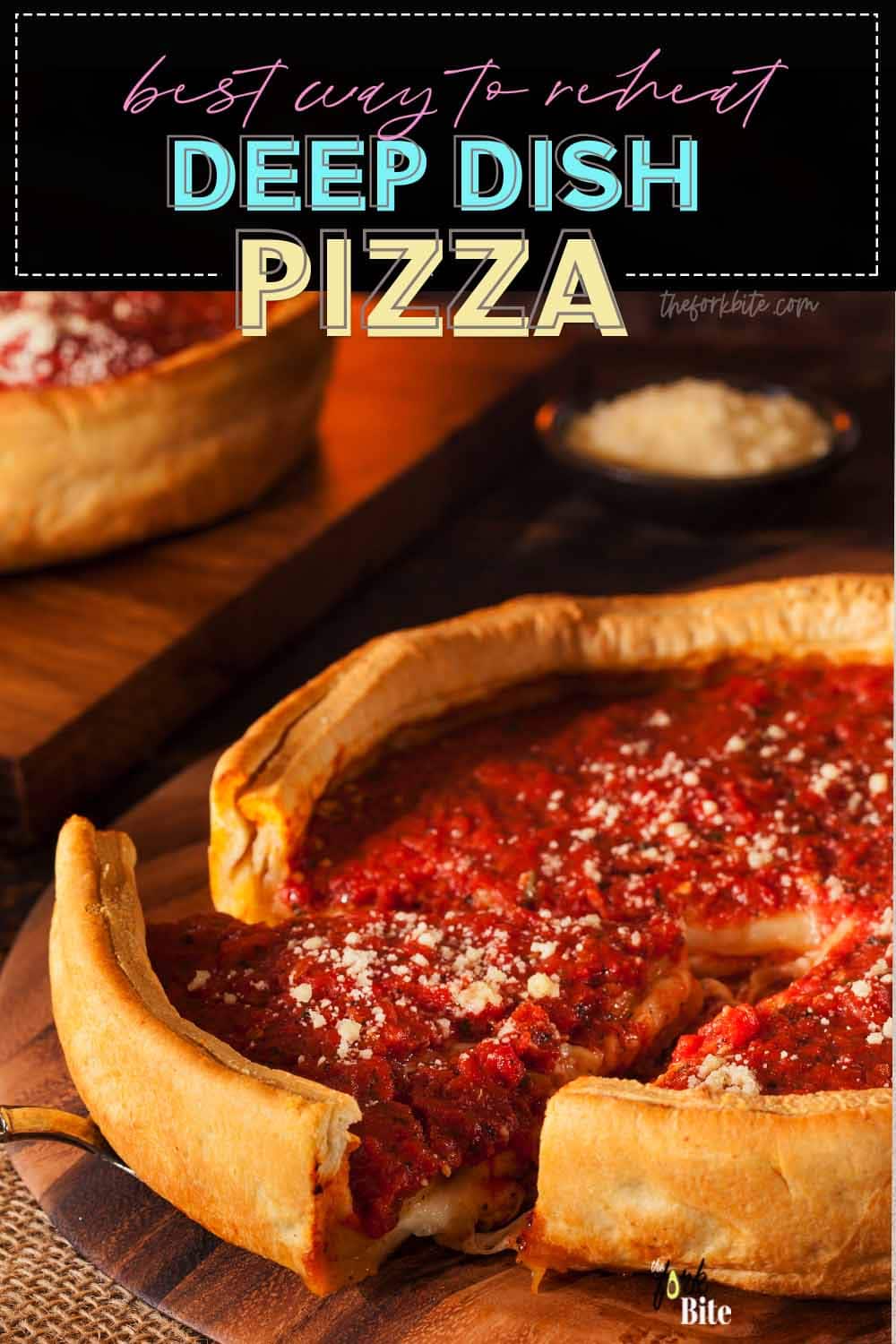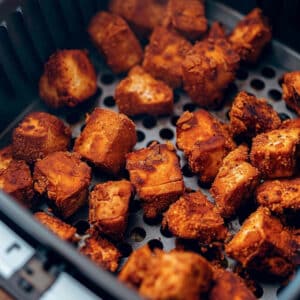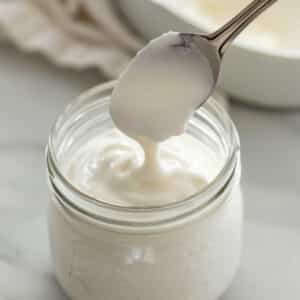Chicago-style deep dish pizza calls for a special method of reheating leftover pizza, and it all comes down to one magic word: skillet. On the rare occasion where you've had a scrummy pizza session, and you have some leftovers (I know - not often enough), you can enjoy it reheated. However, there is a right way and a wrong way to reheat pizza leftovers.
Choose the wrong way, and all you get is a soggy or over-crispy mess. But, do it right, and you can enter pizza heaven again.
If you're lucky enough to have a pizza stone, you are in the minority. Most of us have to make do without. But you can still enjoy delicious reheated pizza if you know what to do.
General rules on reheating pizza
Here are some general guidelines for reheating leftover pizza. With a little bit of tweaking, they will work for both thin crust and deep-dish variants.
First, let's start with the big no-no. Never microwave leftover pizza.
You may be tempted because it so fast. But what you will end up with is either a sorry, soggy lump of dough with a tepid topping or a hard slab of pizza that is impossible to bite through.
This might pose a problem for some of the world's number one pizza fans - students. Student digs are never very spacey. A microwave is often all for which there is room. But have no fear. Salvation is at hand. Get a toaster oven.
When microwaves first came on the scene, they kicked toaster ovens into touch. They were faster and more economical than traditional full-size ovens and easy to use. But if you're a leftover pizza connoisseur, the microwave method simply doesn't cut it. But a toaster oven does!
They are inexpensive to buy, even for poor students. Band together for a good cause. They are cheap, but they only take up the same size as a standard dorm-sized microwave. Let's face it. If reheated pizza is your thing, a toaster oven is a no-brainer.
All pizzas reheat well in toaster ovens, but especially Chicago style pizzas. You get all that wonderful flavor, and even the texture stays true.
What is Chicago deep-dish pizza?
Okay, I admit it. I love deep-dish pizzas. There is only one winner when it comes to choosing between the thin-crust New York (Neapolitan) style pizza or the Chicago deep dish. How deep is your love?
"Chicago" usually denotes deep-pan when talking pizza. It is a delicious pizza with layers of cheese, meats, veggies, and sauce, preferably in that order for ultimate yumminess.
Now, let's get this right. We're not talking deep base here. The crust of a Chicago should be thin to medium. But the sides should be two to three inches tall, and it should get slightly fried when reheated thanks to the oil greasing the pan.
No mealy-mouthed thin, little Neapolitan style base here. The crust is deep enough to accommodate all those superb toppings. It's a bit like comparing a flatbread to pie. And pie with attitude at that!
Now don't get me wrong. All pizzas are yummy, regardless of base thickness. But for me, the Chicago deep dish is a full, wholesome, chunky meal, rather than a snack to enjoy on the go.
Best method: skillet
Reheating your leftover deep-dish pizza in a conventional toaster oven, as described above, will give you good results. But is it good enough?
If you're a real deep-dish pizza freak, like me, you want the best possible result, and here's how to get it.
You already know that I love Chicago style deep dish pizza more than any other type. To me, the reheating process has to be perfect, and the way to achieve this is to use a cast-iron skillet.
From dust to dust and from pan to pan. For your happy-ever-after pizza, reheated in a similar way to as it was cooked in the first place, use a cast-iron skillet.
If you haven't yet tried this method, it's one which many deep-dish connoisseurs swear by. Some even say that it tastes better than it did initially, but maybe that's taking things too far.
Try it yourself and see. Here's how to do it.
If you haven't already got one, go out and treat yourself to a cast-iron skillet. As a deep-dish pizza fanatic, it will be one of the best investments you'll ever make.
- Before you use your new cast-iron skillet, it needs to be adequately seasoned. If you're not sure how to do this, take a quick peek at this article on the southern living website. You only ever have to season it once.
- Coat the bottom of the skillet with a thin layer of olive oil. Just a light layer will do. You don't want your reheated pizza to come out too greasy.
- Put a high heat under the skillet to get it nice and hot, and when it's hot, turn the heat down to medium and give it a minute to settle before putting in those gorgeous slices of deep-dish pizza.
- Add a few drops of water around, not on, the pizza. Now, cover the skillet. You do this for two reasons.
- Firstly, it will help to ensure that the cheese melts and the toppings warm through.
- Secondly, and equally importantly, you need to retain some moisture in your pizza to stop it drying out.
- Allow the pizza to get warmed for approximately 3 to 5 minutes while keeping a watchful eye on it. Server up and treat your taste-buds.
If you've got a griddle, you can use this for similar results.
- Start with the griddle cold, put the slices in, cover them up, and cook at around 200°F for approximately 20 minutes.
These methods will work equally well for the thin crust as well as deep-dish pizzas. Obviously, common sense dictates that the cooking times will vary slightly.
Runner up: toaster oven
Having said for the umpteenth time that microwaving is a no-no, turn to your toaster oven. If you're using a conventional oven, the methodology is similar.
- First, warm your oven up to a temperature of 450°F. The reason for doing this is that you want to reheat your pizza without burning it.
- Next, line your baking tray with a sheet of aluminum foil and spray it with a fine drizzle of oil. Nothing is worse than finding your nicely reheated pizza stuck firmly to the baking tray - this will prevent that from happening. The crust is everything.
- When you put your slices onto the foil, leave a little space between each slice.
- Now spray a little water onto each slice. Not too much. All you're trying to do is to give the slices a little boost of moisture.
Why? This moisture will encourage the water inside the crust to expand just enough to rejuvenate it to its former glory.
If you overspray the water, you run the risk of making your pizza soggy, and if you under spray it, you will end up with that horrible style cardboard taste. It's not rocket science, though. It just may take a little bit of trial and error.
- Before putting your pizza into the toaster or oven, cover it loosely with another piece of aluminum foil. This not only helps prevent the moisture from escaping, but it also helps prevent the pizza from burnt.
- Close the oven door and bake your pizza approximately 20 or 30 minutes.
You can use this method for cooking both thin crust and deep-dish pizzas.
Obviously, the thinner the crust, the less heating time required. Just use your head and test it every few minutes to ensure it's cooked through but not burnt.
Try to avoid: microwave
Whatever your preference pizza-wise, don't be tempted to microwave it. Like Batman and the Joker, pizza and the microwave are mortal enemies.
The only possible exception is maybe pizza designed for microwaving - but hey, c'mon, it's not like it's real pizza anyway. Try the real deal. You'll never go back.
If you do try microwaving pizza, you need to overheat it, especially when it comes to deep-dish. It's the only way of ensuring you heat it right through.
But trying to recreate the original pizza's lush topping and chewy, while still being crispy, the crust is nigh on impossible. What you will invariably end-up with is a sad, sorry, soggy crust. It just ain't nice.
How to reheat a deep-dish pizza for the best results?
So, there you are. You've got some leftover Chicago deep-dish pizza, and there is no way you will throw it away. It's a hangable offense.
What's the answer? Try this on for size.
First things first
Not sure if you are going to be reheating that leftover deep-dish pizza? Don't be silly - you know you are! But don't just throw it back in its box and put it in the fridge. That won't do at all.
If you want to enjoy some delicious, reheated pizza leftovers, you need to store it properly first.
Grab some kitchen foil, some aluminum wrap, or even a Ziploc bag, wrap it up to prevent the air from getting at it, then tuck it away inside the refrigerator. It'll be good here for three or four days if you can wait that long.
Going down the pizza stone route
How about reheating your pizza on a pizza stone? Have you ever heard of a pizza stone?
Well, if you haven't, a pizza stone, or baking stone, is nothing more than a cooking surface made out of stone. It can also be made out of ceramic and sometimes even metal. You put your pizza on it and then cook it in a conventional oven.
Pizza stones are usually shaped like plates. The theory is that stone conducts heat and traps moisture. It, therefore, allows your oven to operate somewhat like a real pizza oven.
It all sounds very promising, but the only drawback is that pizza stones are not cheap. They're therefore almost certainly not for the typical hard-up student.
The good news is that given the alternatives we discussed above for reheating pizzas, all is not lost. Pizza lovers will have their individual preferences to reheat any leftover pizza slices, be they thin crust or deep dish.
The one thing that the majority of us agree on is not to use a microwave unless it is a very last resort. For some, however, even this is a bridge too far, and they would prefer to eat it cold.
Cold pizza is better than no pizza.
When you get down to basics, if it's a choice between eating cold pizza leftovers, or some other snack from the refrigerator, I know what my choice would be. Cold pizza every time.
You just need to make sure that the pizza has been stored in the right way, especially if several pizza buddies were at the original feast.
Some people wash their hands better than others. Those who are not too fastidious could leave bacteria on the slices they touched. These bacteria will multiply if left at room temperature for too long and could end up giving you food poisoning.
So it's best to put the leftovers into the refrigerator as the cold temperature will slow down the progression of any bacterial growth. Check here how to reheat pizza using an air fryer.
Best way to store leftover pizza
What’s the key to storing leftover pizza? Stack and seal! To increase your enjoyment of cold pizza without risking food poisoning, here are the following tips:
- Don't just refrigerate leftover pizza in its cardboard box. Not only will the pizza tend to dry-out, but it could also absorb other food smells.
- Rather than putting the pizza back into its original box, throw the box away and stack any leftover slices of pizza, separating each one with a piece of paper towel or parchment paper in between. Take the stack and then wrap the whole thing in plastic film, wrap again in aluminum foil if you wish, and put it in the fridge.
- Stored in this way, leftover pizza will last for up to 3 to 4 days in your refrigerator.
- The wrap and stack method is also suitable for freezing leftover pizza. It can remain in your freezer for up to 2 months.
When all is said and done, there is no excuse for throwing leftover pizza away. Reheated or cold, it's still one of the best and most comforting snacks in the world. Enjoy!











